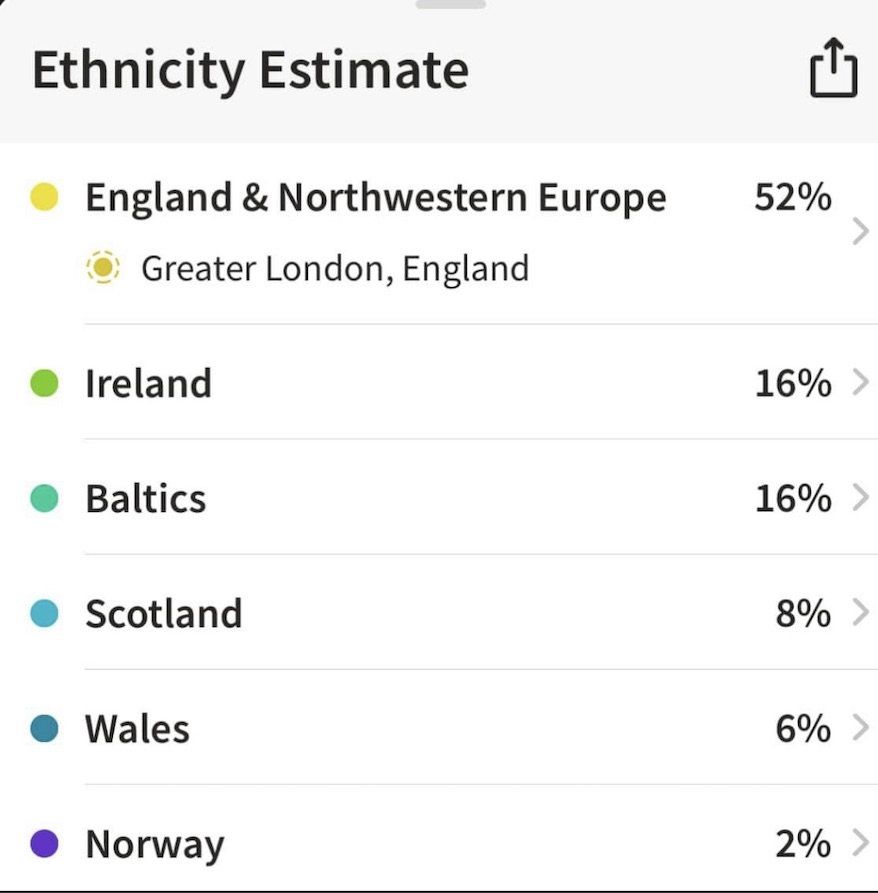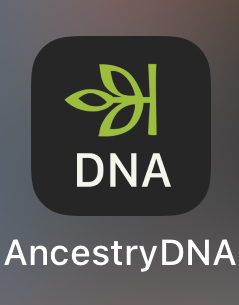For Christmas last year, Dana got me the Ancestry DNA kit. The initial results were very interesting, but they recently updated the results. While they are not too much different… but there are some additional regions and some of the exiting regions have been updated percentages.
So, looking at these, there is only one conclusion: I am white as a snowflake, but I AIN”T NO SNOWFLAKE! From my family history, I know that my Grandfather was from Poland and then went to England and met my Grandmother. My Dad, then, was half English and half Polish. My mother’s side, I knew there was all European Countries. The ones I was certain about was Irish and Scottish, but the rest of uncertain. I always said I was 25% English, 25% Polish, and 50% Mutt. :). Now, I know what my estimated DNA is…


This is how the changes look
England & Northwestern Europe: 52% -> 51% (-1%)
Baltics: 16% (0%)
Wales: 0% -> 11% (+11%)
Ireland: 16% -> 11% (-5%)
Scotland: 8% -> 6% (-2%)
Germanic Europe: 0% -> 3% (+3%)
Norway: 2% (0%)
These are the explanations of my DNA matches
England &
Northwestern Europe
The history of Britain, the heart of our England
& Northwestern Europe region, is often
presented as one group of invaders after
another displacing the native population. The
Romans, Anglo-Saxons, Vikings, and
Normans all left their mark on Britain both
politically and culturally. However, the story of
Britain is far more complex. In fact, modern
studies suggest the earliest populations
weren’t wiped out, but adapted and absorbed
the new arrivals.
Baltics
Thousands of years ago, the early ancestors
of the peoples in our Baltics region came
from the east and south. They entered a
landscape of low-Iving plains, thousands of
lakes, and millions of acres of forest, a
beautiful boundary zone straddling eastern
and western Europe. Inhabitants have seen
Vikings, crusading Teutonic Knights, empires,
and Communism come and go, but they have
maintained an attachment to land, culture,
and freedom.
Wales
The rolling hills and steep cliffs bounded by
England to the east and 870 miles of
coastline on the north, west, and south make
up our Wales population region–or Cymru in
Welsh, which is still spoken there. First settled
by Celtic tribes, the country’s ancient and
medieval history has been preserved and
woven into a modern sense of Welsh identity
and pride, which is still visible in the country’s
600 castles, its Welsh-language media, and
its Eistedfoddau, festivals that celebrate
Wales’s long tradition of literature, poetry, and
music.
Ireland
Our Ireland population region is centered on
this small island famed for its emerald-green
landscape, vibrant Celtic folklore, and deep-
rooted spirit of hospitality. The region’s Celtic
heritage is notable in its culture, landscape,
and the lyrical dialects of the Irish language
spoken here. The island boasts a rich sporting
culture, with Gaelic football, hurling, rugby,
and football, and is famous for its literarv
prowess as well, with names like Swift, Joyce,
Yeats, O’Brien, and Rooney. After centuries of
emigration, most notably during the Irish
Famine (1845-1849), this island is the original
home of an Irish diaspora that is estimated at
over 100 million members.
Scotland
With its center in the northern third of the
island of Great Britain but stretching down to
Brittany in France, our Scotland ethnicity
region is known for its geographical beauty,
medieval-architecture, and folklore. Gaelic
and Scots have influenced regional English
dialects and are both still spoken in some
areas. National symbols, including the Lion
Rampant, clan tartans, and bagpipes, are
often recognized internationally alongside
symbols of traditional cuisine, like whisky and
haggis.
Germanic Europe
The dramatic landscape of our Germanic
Europe region rises from Dutch and German
lowlands along the North Sea through
forested uplands to Austria’s Alps in the
south. The German people were united by
language and culture before Germany
became a united country in 1871. Known
as Das Land der Dichter und Denker (“the land
of poets and thinkers”), Germany is home to
some of the oldest universities in the world,
and this region has a long tradition of
producing world-class scientists, inventors,
theologians, artists, and composers.
Norwav
The earliest inhabitants of our Norway region
were strong, seafaring peoples. For centuries,
hunter-gatherers slowly pushed north across
the Baltic Sea, probing coastal fjords and
inland stretches for arable land as ice melted
off the untamed region. While Norwegians,
Swedes, and Danes all share a common
Norse heritage, over time, Norway’s resilient
coastal communities evolved into a nation
known for its seamanship, technology, artistry,
and mythology.
